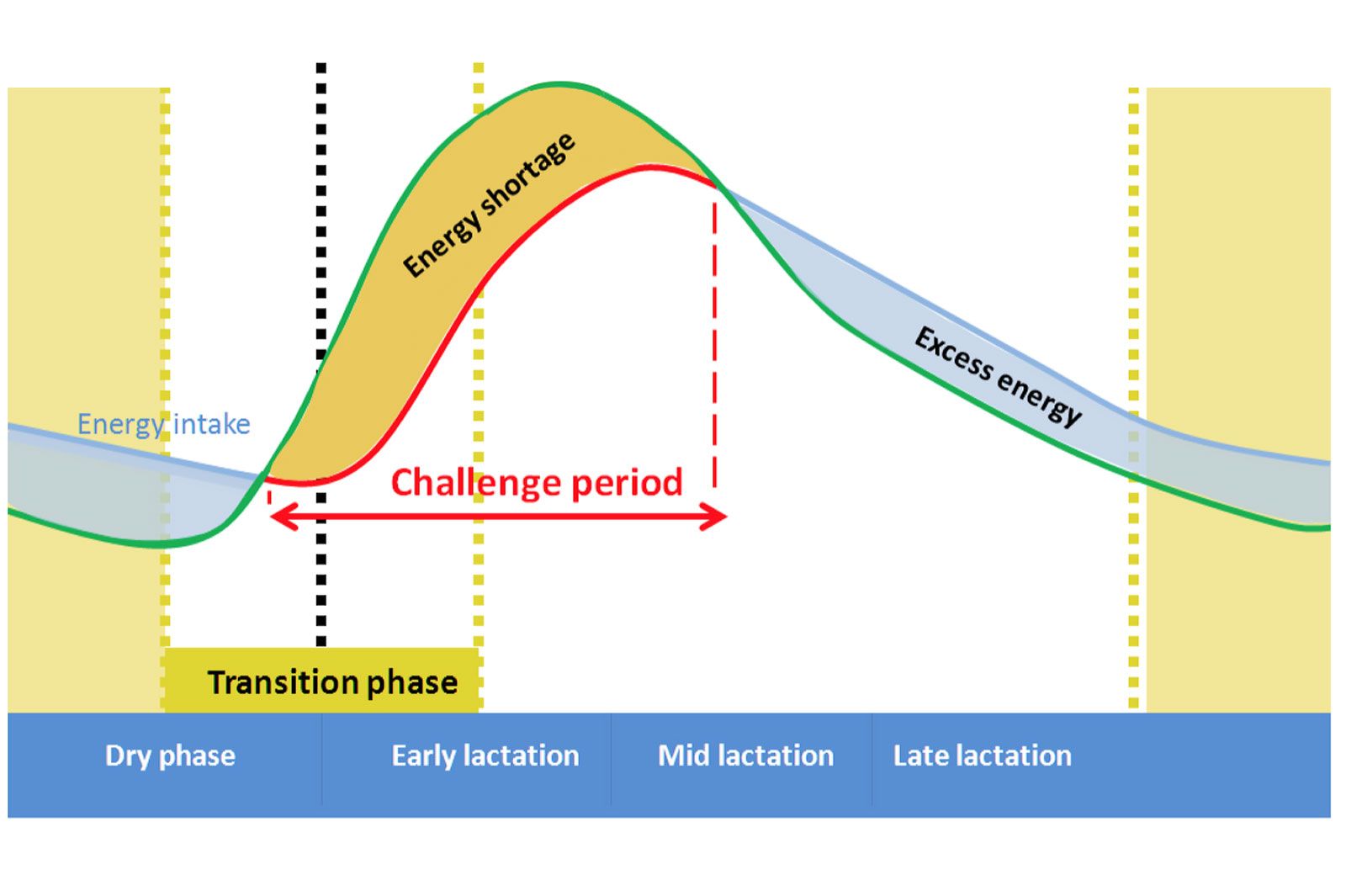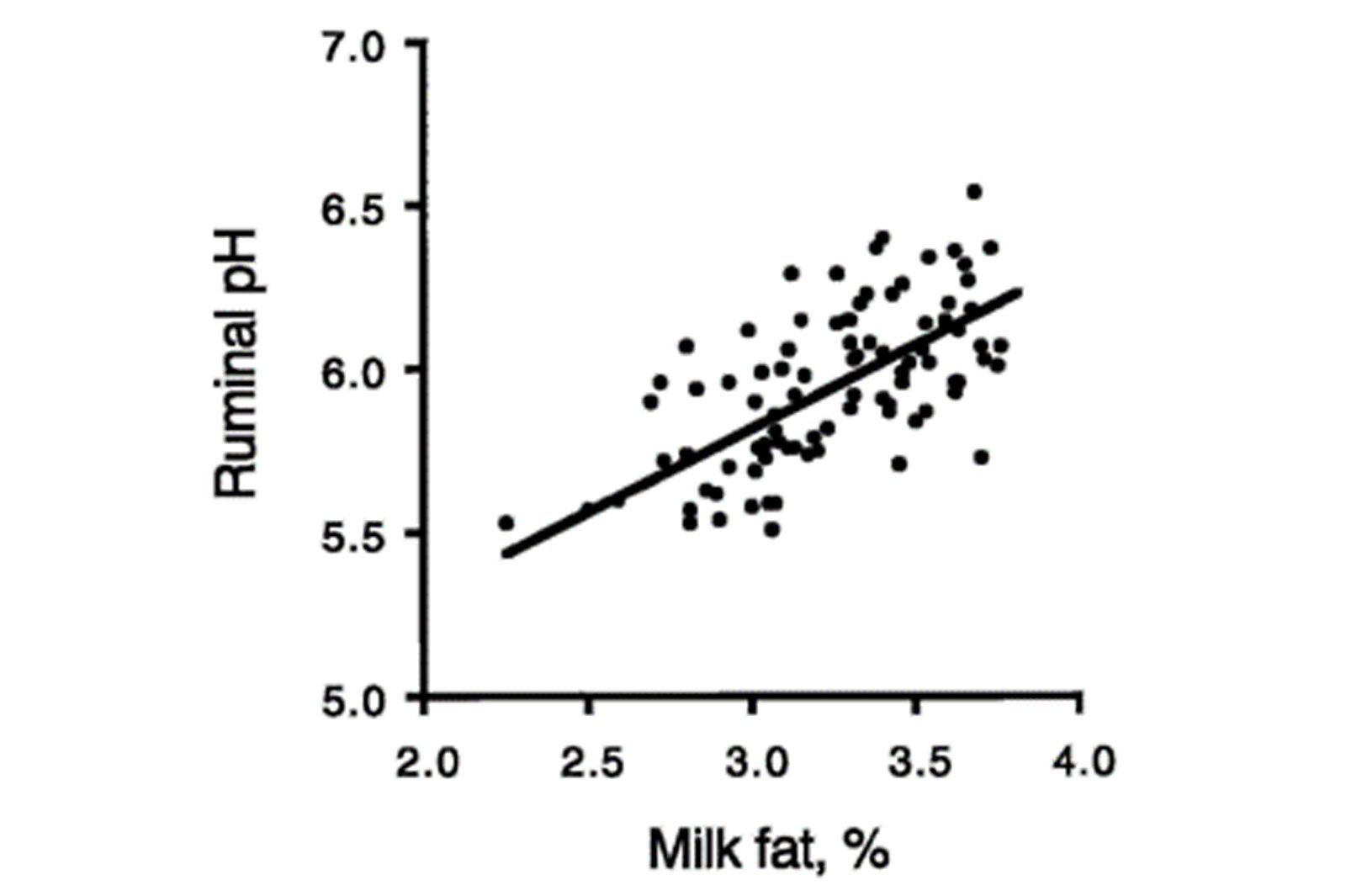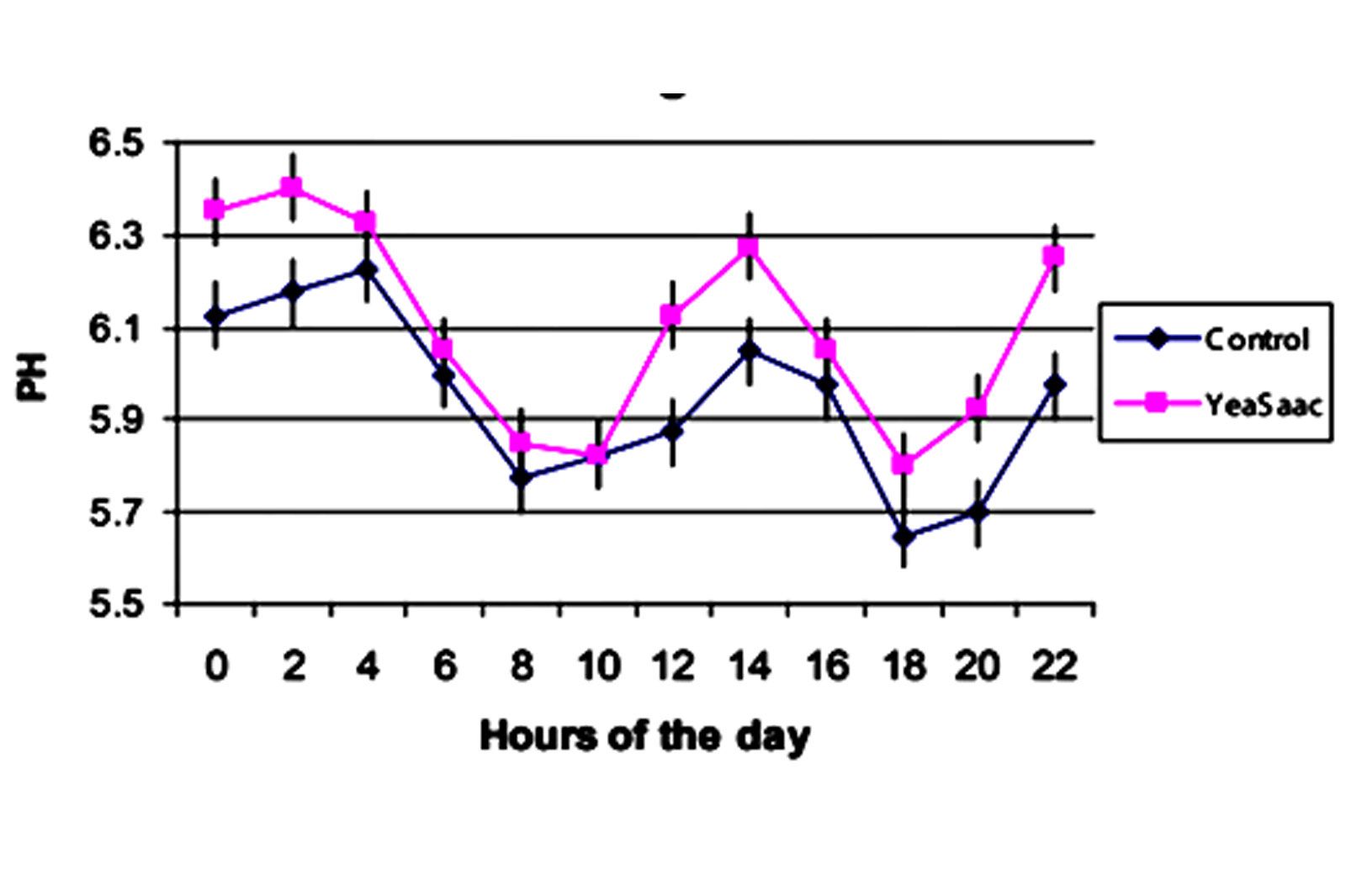Unlocking genetic potential

In early lactation, milk yield and lactose concentration are on a natural upward trajectory. However, appropriate nutrition will dictate whether a cow reaches her full genetic potential for peak milk production. From calving up to now, milk fat and protein concentrations will have remained quite high. However, from now until the end of May, most spring milk producers' milk solids concentrations will decrease, representing potential challenges.
Typically, milk protein concentration will now start to decrease. In early lactation, the primary factor for a decrease in this component is negative energy balance (NEB). This is due to the milk yield potential of dairy cows having increased, while the cows’ ability to consume sufficient feed to support this extra milk has not increased at the same rate (Figure 1). In the context of early lactation, it’s not the actual component percentage that’s important; the rate of decrease is more important. The same can be said for butterfat content, though different physiological functions will be responsible for a drop in this component.
Butterfat is the most variable component in cows’ milk and will generally start to decrease from April onwards, typically coinciding with the onset of the second grazing rotation. This trend is due to high oil levels in the pasture, or to be more specific, polyunsaturated fatty acids (PUFA) like conjugated linoleic acid (CLA).
Once a cow consumes this oil-rich pasture, a physiological process known as biohydrogenation occurs. The aforementioned oil type is toxic to rumen bacteria; however, the rumen converts this oil into a usable dietary fat source. This process is completed at the expense of milk fat production. In context, 2g of CLA in the rumen can reduce milk fat production by 20 per cent (or from 4 per cent to 3.2 per cent), demonstrating the sensitivity of the rumen to this oil.
It is also worth noting that milk fat content is directly correlated with ruminal pH (Figure 2). As ruminal pH decreases, so will milk fat. The high dietary oil level creates a more acidic rumen environment. This can also lead to issues related to fibre digestion and sub-acute ruminal acidosis. Rumen function is impaired in the above scenario, and many nutrients are excreted still undigested. Signs of poor rumen health include little time spent chewing the cud, loose and bubbly manure, and poor rumen fill score.

Figure 1. Energy balance of a dairy cow across lactation stages (Shaumann, 2015).
Nutrition
In the first six weeks of lactation, nutrition is critical to optimum health and 305-day milk production performance. One of the most important factors determining energy balance is dry matter intake (DMI), and this will also influence the rate of body condition score (BCS) loss. The aim is to avoid a loss in BCS of more than 0.5 units from calving to breeding (equating to 25kg body weight on average). For example, if a cow calves down at a BCS of 3, that cow should be at no less than a BCS of 2.5 when being served. If the rate of BCS loss is greater than the above, this can indicate insufficient DMI. Farm nutritionists may use a simple calculation to determine DMI potential in kilogrammes: peak milk yield (L)/1.5. ie. 27 L/1.5 = 18 kg DMI.
Unfortunately, ensuring sufficient feed quantity alone will not guarantee good levels of milk solids. The quality of nutrients present is important. Starch and sugar levels will influence milk protein concentration. Good sources of starch include concentrate feed and maize silage, whilst fodder beet and grazed grass are excellent sugar sources. A milking cow diet should be composed of 20% starch and sugar. A local farm nutritionist should be able to advise on the best way of achieving this.
‘March many weathers’ is an old saying that is certainly accurate for Irish weather. Therefore, the starch and sugar content should be maintained if cows have to be brought inside for a period due to inclement weather. Butterfat will be influenced by fibre quantity and quality. Where cows graze lush pasture, a reduction in milk fat can be counteracted by offering long fibre in the form of straw and/or grass silage. Alternatively, fibre sources like soya hulls and beet pulp can be integrated into the parlour nut.

Figure 2. Relationship between milk fat and ruminal pH.
There are four key pillars to tackling the aforementioned issues:
- Nutrition;
- Rumen health;
- Grassland management; and
- Genetics.
Rumen health
An earlier paragraph details how lush, second-rotation spring grass can impact rumen health and milk fat synthesis of the cow. These issues related to rumen health can be corrected or prevented without impairing milk production. Maintaining dietary fibre levels and making gradual dietary changes will aid in maintaining rumen health. For the rumen to work efficiently, it needs a completely anaerobic environment. Where cows consume lush spring pasture, this is not always the case. Integrating a scientifically proven yeast (like Yea-Sacc) into the total mixed ration or parlour nut can ensure an anaerobic environment in the rumen, which in turn, will help to increase fibre digestion. Using a live yeast can increase milk solids by 6 per cent and reduce the time during a 24-hour period that ruminal pH spends in an acidic state (<pH 6), as demonstrated in a University College Dublin grazing study (Figure 3).
Grassland management
Grassland management is another key pillar to achieving good milk solids production over the course of lactation. Cows should graze out to 4cm during the first grazing rotation. This will ensure an excellent-quality feed source for the second grazing rotation, which should maximise milk yield and protein concentration. However, attention should also be paid to rumen health and milk butterfat content. A parlour nut with Yea-Sacc included will supply adequate minerals to the cow and ensure good rumen health and optimal milk solids production. The parlour nut recommended feed rate should be adhered to if there are no other forms of dietary mineral, as this will ensure that the cow receives the full rate of necessary minerals.
From here, a decision can be made on grass allocation amount. The key to allocating grass is to regularly complete grass measurements. Measuring will enable us to work out the area required to adequately feed a herd of cows over 24 hours. For example, if the parlour nut is to be fed at 4kg fresh weight/head (3.5 kg dry matter), this requires an allocation of 14.5kg DMI minimum for a herd peaking at 27 L and 18 kg DMI.
Other grassland management tips include:
Follow cows with fertiliser as opposed to blanket spreading;
Graze paddocks out when pre-grazing yield is 1,300-1,500kg dry matter per hectare; and
Protect regrowth in large fields with the use of a back fence.
All of the above will help to keep grass oil levels to a minimum, benefitting milk fat production.
Genetics
Lastly, a herd’s genetic make-up will also determine the level to which milk solids will drop in the spring and early summer. Some farmers who chase high levels of milk yield in a herd may experience lower levels of fat and protein concentrations than seen in other herds. This issue can be corrected through breeding decisions, and a 5- to 10-year breeding plan should be implemented to rectify any production issues. A qualified bull advisor should aid with this.
In summary, a herd may have great genetic potential for milk solids on paper, but this does not guarantee good milk solids in reality; appropriate nutrition is key to unlocking that genetic potential.

Figure 3. Effect of Yea-Sacc supplementation on ruminal pH (p < 0.01).




